
Elton v Pnau: Producing Cold Heart
Spark up your 2010 MacPro, Pro Tools 10 and NS10s as Pnau’s Peter Mayes steps us through his (otherwise) very modern production processes.
The pandemic and the associated lockdowns have been a major challenge to the vast majority of people, but a lucky few have fared exceptionally well, often completely unexpectedly so. Pnau are a case in point. Sometime in March of 2021, each member of the Australian trio was stuck in his respective home and studio, not quite sure what to do with himself and what the future would hold.
It was at this point that Peter Mayes, Pnau’s all-round computer and production whizz, received some files from the band’s main singer and songwriter, Nick Littlemore. Mayes remembers, “It was a cut-up he’d made of the chorus vocals of the Elton John song ‘Sacrifice’, and Nick had added a basic beat and some chords. I started to develop that, and before long I got a result that everybody was very excited by. Elton loved it, and arranged for Dua Lipa to add another vocal.”
The resulting track was released in August 2021, and as we all know, it became one of the biggest hits of the year and lead single on Elton John’s album ‘The Lockdown Sessions’.
TOP OF THE WORLD
Talking via Zoom from his studio in Los Angeles, Peter Mayes clearly feels on top of the world, with the success of ‘Cold Heart’ catapulting Pnau back into the limelight. He was happy to spill the beans on how exactly ‘Cold Heart’ came into being. It’s a story that’s intimately interwoven with the close ties that Pnau has had with Elton John for many years, and with Mayes’ own musical background.
Mayes grew up in the ’80s in Sydney with parents who were “very supportive of music”, he explains. “My older sister and I both received classical piano lessons from an early age, and I started playing the guitar when I was seven. Nick and I became friends at high school, when we were 13, and we really bonded over music. We were into European rave and industrial stuff, and crossover acts like Meat Beat Manifesto and Thomas Techman. It was largely instrumental stuff with lots of layers and textures but not a lot of melody.
“We bought a Roland SH-101 for A$200 in 1993, and Nick had a garden shed in which we’d sit making weird sounds playing the 101 through a guitar or keyboard amp, and recording ourselves onto a cassette recorder. Next we acquired things like the Roland TR-808 drum machine, the Roland TB-303 Bass Line, and my first serious synth, the Roland JX-3P. Our school had a studio, so we also got used to working with a Mackie desk and a couple of Tascam DA88 recorders.
“Nick and I decided to form a band, Pnau, and managed to get a record deal with a small indie label, Peking Duck. After school I went to work in a music story for a couple of years, and Pnau began to happen. Our first album, ‘Sambanova’ was released in 1999, and it was great because we got signed to Warners and did a bunch of shows, and it became a big thing in Australia. It won an Aria Award for Best Dance Release!
“We did the record on a PC with Cubase VST 3.5, and used tons of samples. The day we won the Aria Award the album was pulled off the shelves, because the label had not cleared the samples. We had never hidden the fact that we used samples, but the process was new for Australian labels at the time. Major record labels in Australia at that time did not have electronic dance music acts.”



PNAU’S THE TIME
Despite the sampling setback, Pnau have since gone on to become “one of Australia’s most loved electronic music acts”. Although Pnau’s second album, Again (2003), didn’t set the world on fire, but their self-titled third album (2007) was a major success. It saw the active involvement of Nick Littlemore’s older brother, Sam, as producer and co-writer. The band’s third album also caught the attention of Elton John, and he became a huge fan.
“Elton bought a hundred copies of the album, and sent them to friends. We ended up signing with his management company and moving to London. We’re still with his management company. The first thing he did when we met him in London was give us the multitracks of all his albums, saying, ‘do whatever you want with them. Make a record.’
Pnau, still consisting of only Mayes and Nick Littlemore, duly took Elton up on his word, and released the UK No.1 album ‘Good Morning To The Night’ in 2012. Released under the artist name ‘Elton John vs Pnau’ it contained eight tracks, each sampling several Elton John songs, in one case as many as nine, with a total of 40-something sampled Elton John songs.
“Elton never told us what to do, and he also did not want to hear things until they were done. He was like, ‘show me the paintings when they hang on the wall!’ Doing the album took us years, because we were working with songs in tons of different tempos, almost never played to a click. I’m also not a fan of time stretching, so we had to cut everything by hand to make it fit a tempo. For the most part went also for deep cuts, and not the big hits.”
VINTAGE SOFTWARE
‘Good Morning To The Night’ provided the blueprint for ‘Cold Heart’, which also samples multiple Elton John songs, some of them fairly obscure. However, there are a few more historical details to be added to place the story of ‘Cold Heart’ properly in context. After the release of ‘Good Morning To The Night’, Nick Littlemore and Mayes moved to Los Angeles. “LA is a strange place, but it makes sense to be here for the music. People say it’s a pop town, but there are all sorts of things, from pop to underground to, obviously, scoring and film music.”
Mayes built his own studio after arriving in LA, while working as a co-writer and co-producer on ‘Ice on the Dune’, the second album of electropop duo Empire of the Sun, of which Nick Littlemore is one half. Exemplifying Mayes’ roots, the studio features a large number of guitars and keyboards, and is hybrid analogue/digital, and features what could be called ‘vintage software’.
“In terms of technology, I’m old school. I still work on a Mac Pro from 2010, and I’m on [MacOS] Lion, from 2012. I’m also still on Pro Tools 10, which came out in 2011. We are just very old-fashioned in what way! I have a subscription and own the latest Pro Tools version, but I come from PC, so when you have a computer working, you don’t touch anything, you just keep on working. The last thing you want is to spend a week updating!”
In the early 2000s I worked in many different studios recording bands, and they would always have NS10s, and I taught myself how to work with them
‘stems mix 2 caption’: Peter Mayes supplied his effects separately to give the mix engineer options.
‘arrange small caption: Some (but not all) of the Cold Heart Pro Tools session.
NS10 MONITORING ALL THE WAY
Nonetheless, the modern age has not passed Mayes by, as he also works frequently in Ableton Live. “I use that on my MacBook Pro, on which I have Catalina. My laptop is my testing ground for the modern world! I’m still on Ableton 10, and use it to write, because the clip-based window is amazing, and reminds me of the days working with MPCs and Notator. Just the way that you can audition loops in tempo is incredible. But to be honest, I’m planning to go fully modern and update my Mac Pro and go for the latest version of Pro Tools. I’m sick of having to manage resources on an old computer, like turning off the wireless and not having a browser open and all those things.”
“I’m also old-fashioned with my other gear. My monitors are Yamaha NS10s. In the early 2000s I worked in many different studios recording bands, and they would always have NS10s, and I taught myself how to work with them. I like them because the transients are great, and you can sit really close to them, so if you don’t play them loudly, you can work in any room and the acoustics don’t matter that much. I also have Focal Twin 6s. There are many great monitors today with incredible detail, but there’s something about the NS10’s that makes me work harder. They are not fun to listen to, they are a tool, and I use them with the sub, for the lower two octaves.
“We generally work in the box, but I have a number of analogue units that give me something unique that I can’t get from plugins. For example, we’re huge fans of spring reverbs. I have the Great British Spring Reverb, which is a drainpipe with a spring in it. I also have outboard like the Eventide H3000, Publison DHM 89 B2 and Infernal Machine 90, Ensoniq DP4, all on hardware inserts on Pro Tools. I keep using these things because of the sounds they give me. It’s nothing to do with the process. You have to repair them, and they can be noisy, and so on. If there were plugins that give me the same sound, I‘d switch to them immediately!”
BIG SACRIFICE
It was in his hybrid LA studio, with access to all Elton John’s digitised multitracks, that Mayes found himself in March 2021. On receiving Littlemore’s cut-up of Elton John’s vocals on ‘Sacrifice’, a single from the singer’s 1989 album ‘Sleeping with the Past’, Mayes set to work all by himself…
“Normally, Sam will join Nick and I in Los Angeles when we do Pnau projects, and while Nick is the true creative of the group, Sam and I are the guys who will focus more on the production and will sit down for months and agonise over the hi-hats or a certain EQ, or whatever. But because of the pandemic we were all in isolation in our own studios, and I had to fend more for myself. We don’t really do online collaborative stuff, and Sam is on the northern beaches of Sydney, where the internet is pretty crap, which does not make it any easier.
“On the 2012 album we did with Elton we focused on his ’70s records, which was his golden era, and this time round we felt like, let’s get into the ’80s and ’90s stuff. In the past when we worked with Elton’s material there were multitracks that had not been transferred to digital, and we would do this in studios. But by 2021 we have all his multitracks either as Pro Tools sessions or as folders with sound files.
“So when I received Nick’s cut-up of the ‘Sacrifice’ chorus vocals, my next step was to add chords, a bass and a beat. I wondered what else we could use from that song, and the verses also sounded great, so I put them in the song as well. I had to change the chords and bass a bit for that. It’s a lot of work, because most sound files are not labelled. I was looking at a file with vocals for ‘Sacrifice’ that simply said ‘Audio 27’. I did not want to it to be just a different version of ‘Sacrifice,’ so I looked around and put the chorus in of ‘Rocket Man’ (1972) to create a big chorus.
“Next I wanted to expand the chorus, and I found a pre-chorus from the song ‘Kiss The Bride’ from 1983 that fit after the chorus. I wanted more additional elements, and found the choir from a song called ‘Where’s the Shoorah?’ from his 1976 ‘Blue Moves’ album. After that it was a matter of adding bits and pieces to create more excitement and atmosphere. I added more drums, and strings, bells, and a guitar, plus some ad libs from Elton that came also came from the ‘Shoorah’ song. Dua Lipa’s vocals were added after I had finished the track. Elton asked her, and I don’t know who recorded her or where. I never saw the raw recording, but only heard her in the final version, mixed by Josh Gudwin.”
The first thing [Elton] did when we met him in London was give us the multitracks of all his albums, saying, ‘do whatever you want with them. Make a record.’
STAYING COOL
According to Mayes, one of the big challenges he faced when putting ‘Cold Heart’ together was to make everything fit into the 116 bpm tempo. “As I said earlier, I don’t like time-stretching. I will bring in loops and cut them up, and make the pieces fit in the timeline. This is easy to do with drums, but even with vocals I’ll cut up the syllables. Time stretching is a last resort for me, though with Elton I sometimes had to do it, because there are so many tempos. Throughout his careers his BPMs have gone from 50 to 180, plus the tempos often shift inside a song. ‘Rocket Man’ was actually a lot faster, and I had to slow it down a lot.”
Mayes mentioned Josh Gudwin, who laid the last hand on the session before its release on August 13th. However, Mayes stressed that he spent considerable time on the rough mix that he sent to Gudwin, taking particular care to make Elton John’s vocals sound 21st century, and to make them fit with the electronic disco, dance-pop style of the arrangement, which has echoes of the European synth pop and rave that inspired the band in its early days.
“I’d like to think that my demo mixes are reasonably evolved. For me it’s all part of that original time when it’s all instinct. You’re pushing things that may be wrong technically, but you are just feeling things, and going for a great vibe. I sent my first demo mix to Elton and he loved it, so after that I took care not to change it too much after he had heard it. I was just gently massaging things, using my outboard, like the Great British Spring, and Eventide H4500 and the Ensoniq DP4.”

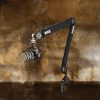




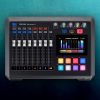

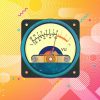











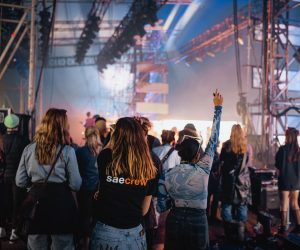
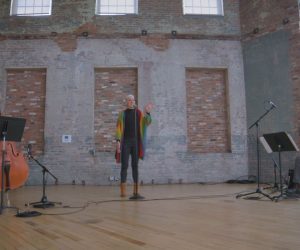



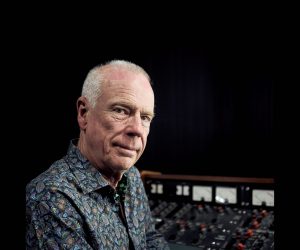







RESPONSES